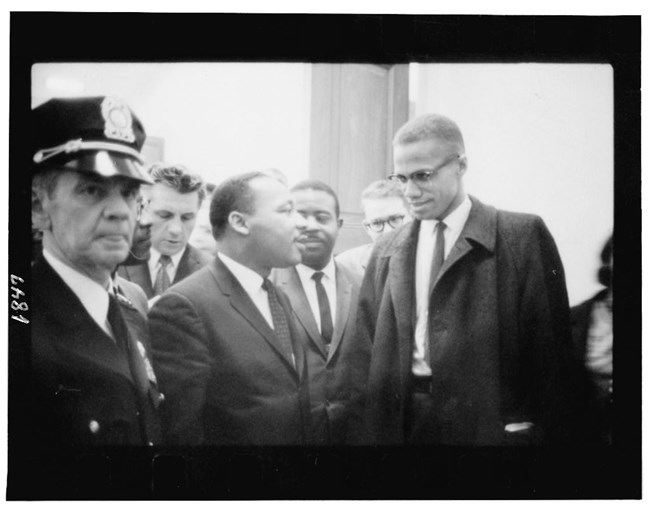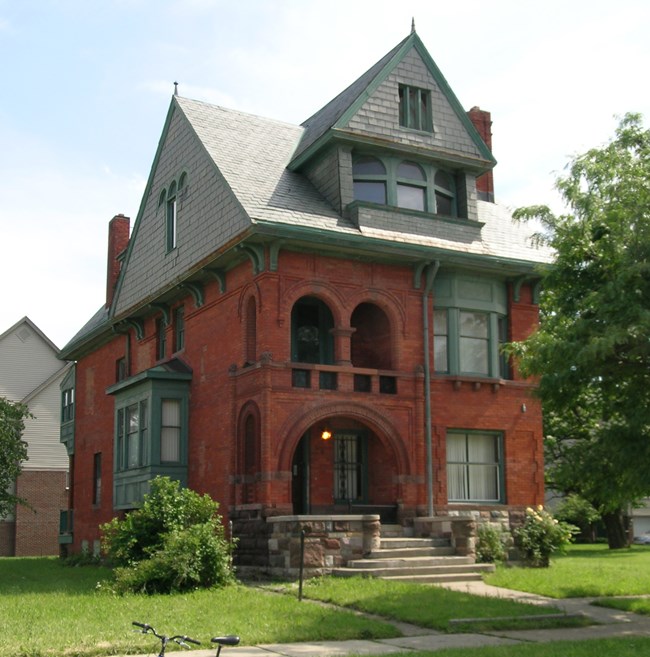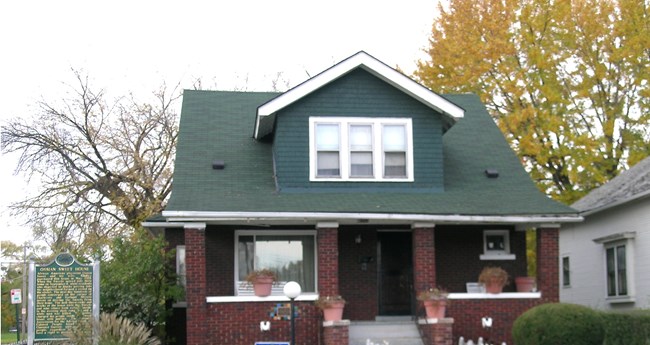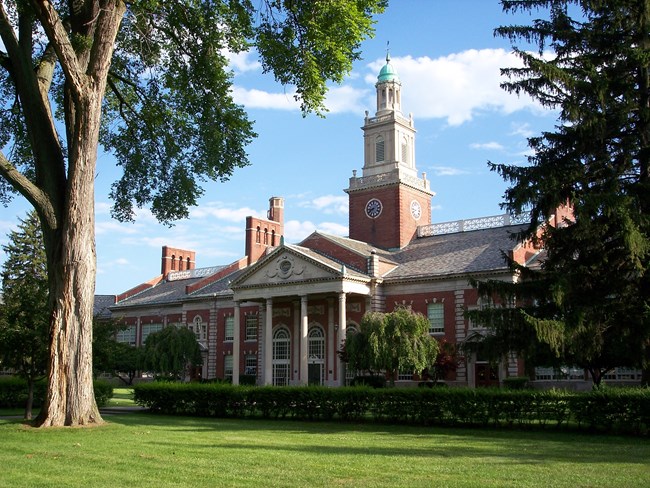Part of a series of articles titled Stories of Detroit .
Article
African American Civil Rights: Detroit

Photo courtesy of the Library of Congress, https://www.loc.gov/item/92522562/
The content for this article was researched and written by Jade Ryerson, an intern with the Cultural Resources Office of Interpretation and Education.
After the Civil War, African Americans in Detroit continued to face discrimination in housing, employment, and education. They were also the targets of violence, including attacks by the Ku Klux Klan.
In the early 1900s, many African Americans migrated north to work in Detroit's booming industries. Yet they rarely saw the benefits. Many white neighbors actively denied African Americans access to decent living conditions and job opportunities. They also enforced discriminatory housing policies to force Blacks into segregated and overcrowded neighborhoods.
After decades of discrimination and inequality, social pressures over the growing African American population erupted into race riots in 1943 and 1967. With this long history of racial tensions, Detroit played a pivotal role in the struggle for African American civil rights. The sites featured below highlight some of those milestones.

Dunbar Hospital
During the early 1900s, many of Detroit’s white hospitals denied African Americans medical care. Because the city’s thirty Black physicians could no longer adequately serve the growing Black population, they founded the Allied Medical Society in 1917. To accommodate the city’s 30,000 African American residents, the Society acquired and converted a mansion into Dunbar Memorial Hospital. Besides caring African American patients, the hospital also offered training for Black nurses and internships for graduate students. Dunbar Hospital was listed in the National Register of Historic Places in 1979.

Dr. Ossian Sweet House
In 1925, African American physician Dr. Ossian Sweet purchased a home in an all-white neighborhood. The night after Sweet and his wife moved in, a mob of white neighbors attacked the property. When the mob rushed the house, a spray of bullets fatally killed one of the white men and seriously injured another. Although the police charged Dr. Sweet with first-degree murder, a hung jury and mistrial declaration resulted in his release. Dr. Sweet’s acquittal became a landmark case for race relations in northern cities and self-defense claims. The Dr. Ossian Sweet House was listed in the National Register of Historic Places in 1985.

Detroit Association of Colored Women’s Clubs
In 1941, members of the Detroit Association of Colored Women’s Clubs pooled their resources to buy a house for their club headquarters. The house was located at the corner of Ferry and Brush Streets. A discriminatory restriction in the deed forbade Blacks from owning property west of Brush Street, including Ferry Avenue. To prevent the club from being evicted, the Association’s president, Dr. Rosa Gragg, moved the house’s front entrance from Ferry Street to the other side of the house. With its new entrance and address on Brush Street, the property no longer fell under the restriction. The house currently sits within the East Ferry Avenue Historic District. The district was listed in the National Register of Historic Places in 1980.

Cobo Hall
On June 23, 1963, a crowd of 125,000 people gathered for Detroit’s Walk to Freedom. At the time, it was the largest civil rights demonstration in United States history. The march concluded at Cobo Hall, where Dr. Martin Luther King, Jr. gave an early version of one of his most famous speeches. He delivered the full “I Have a Dream” speech two months later at the March on Washington. Originally named for segregationist Mayor Albert Cobo, the arena is now known as the TCF Center. It is part of the Washington Boulevard Historic District. The district was listed in the National Register of Historic Places in 1982.

Grosse Pointe High School
In March 1968, Dr. Martin Luther King, Jr. visited Grosse Pointe High School to deliver his “The Other America” speech in the school gymnasium. Just three weeks before his assassination, Dr. King spoke over the shouts of protestors before a crowd of 2,700 people. He described how racism created two different, yet coexisting realities in the United States: one of plenty, opportunity, and freedom for whites, and another of sub-standard housing, inadequate schools, low-income jobs, and racial violence for African Americans. Grosse Pointe High School was listed in the National Register of Historic Places in 1993.

King Solomon Baptist Church
In November 1963, King Solomon Baptist Church hosted the Northern Grass Roots Leadership Conference. In his keynote address “Message to the Grass Roots,” Malcolm X presented the Black Nationalist response to the March on Washington and Dr. Martin Luther King, Jr. It is considered one of Malcolm X’s most influential speeches. Just weeks before, Dr. King also spoke at King Solomon Baptist Church to commemorate the centennial of the Emancipation Proclamation. In April 1964, Malcolm X returned to King Solomon Baptist Church to deliver his “The Ballot or the Bullet” speech. The King Solomon Baptist Church was listed in the National Register of Historic Places in 2015.
Discover more Detroit history and culture by visiting the Detroit travel itinerary.
Last updated: August 30, 2020
